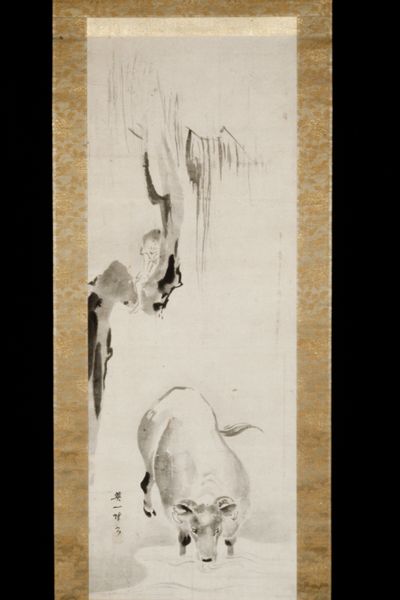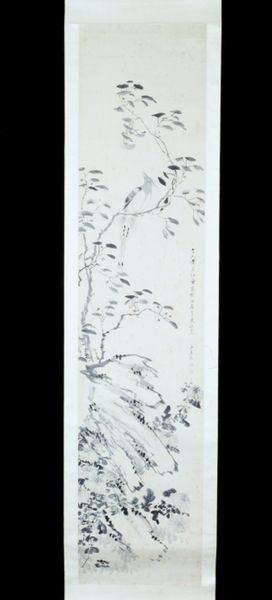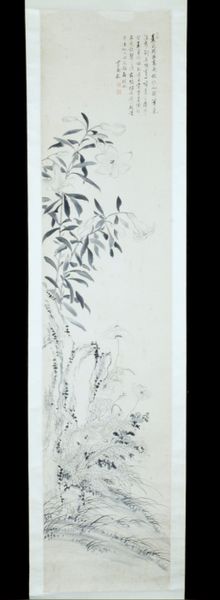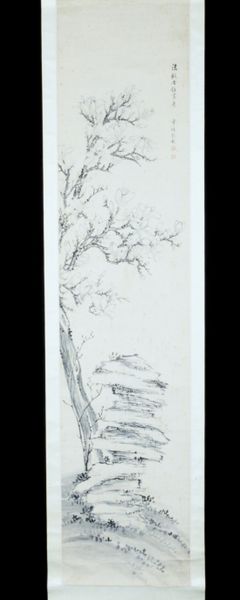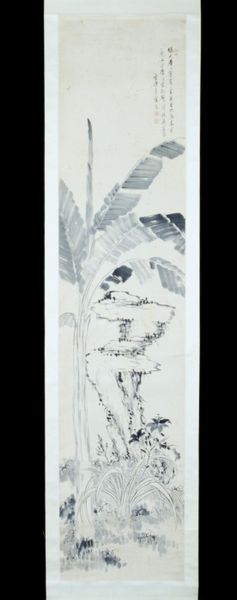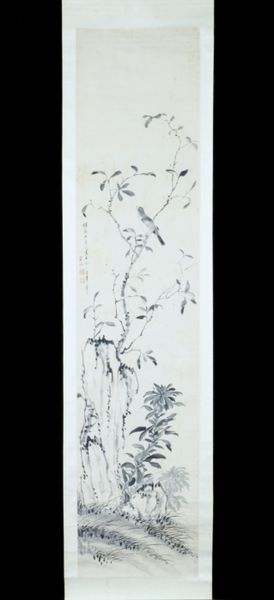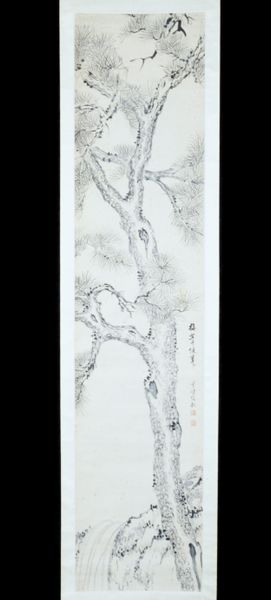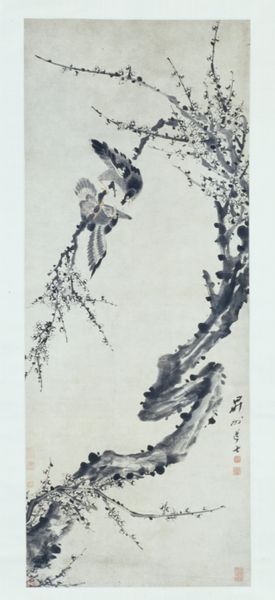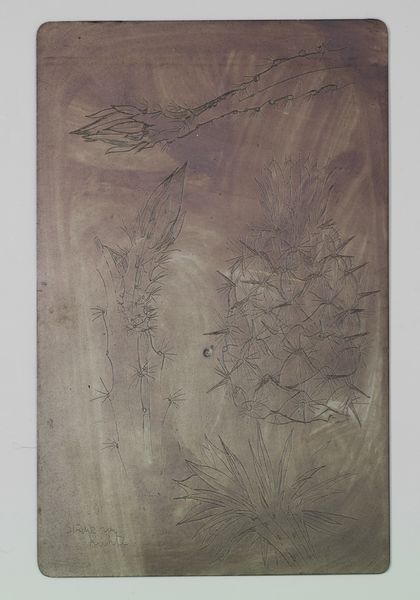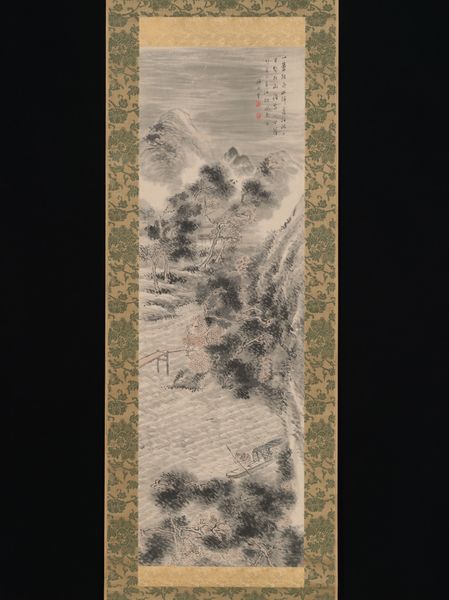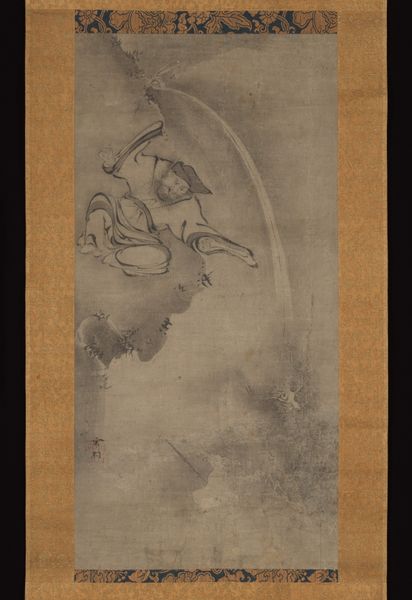![Landscape with River in Mountainous Country [left of a triptych] by Kawanabe Kyōsai 河鍋暁斎](/_next/image?url=https%3A%2F%2Fd2w8kbdekdi1gv.cloudfront.net%2FeyJidWNrZXQiOiAiYXJ0ZXJhLWltYWdlcy1idWNrZXQiLCAia2V5IjogImFydHdvcmtzL2U0MmM5ZTI2LTQ2YmYtNDY5Mi04NDNiLTY1NjdiZGFmMmM3Yy9lNDJjOWUyNi00NmJmLTQ2OTItODQzYi02NTY3YmRhZjJjN2NfZnVsbC5qcGciLCAiZWRpdHMiOiB7InJlc2l6ZSI6IHsid2lkdGgiOiAxOTIwLCAiaGVpZ2h0IjogMTkyMCwgImZpdCI6ICJpbnNpZGUifX19&w=3840&q=75)
Landscape with River in Mountainous Country [left of a triptych] 1884
0:00
0:00
Dimensions: 48 1/2 x 22 5/8 in. (123.19 x 57.47 cm) (painting, approx.)
Copyright: Public Domain
Kawanabe Kyōsai painted this landscape with ink on paper in 19th century Japan. As Japan opened to the West, artists grappled with how to maintain their cultural identities amidst modernization. Kyōsai, known for his blend of traditional and modern styles, uses the conventions of traditional landscape painting to explore these themes. Kyōsai's landscapes often evoke a sense of nostalgia for a disappearing way of life. Here, we see a misty, mountainous scene with a river, rendered in delicate brushstrokes. It invites us to reflect on the relationship between humanity and nature, while at the same time, offering a space for personal introspection and emotional connection. As Kyōsai once said, “A painting is not just a picture, but a story, a poem, a drama.” This is not just a depiction of nature, but a reflection on Japan’s cultural identity during a period of profound transformation, echoing both the beauty and the melancholy of a world in flux.
Comments
minneapolisinstituteofart almost 2 years ago
⋮
Kyo_sai is considered to be one of the most talented painters of Japan's late nineteenth century. Classically trained as a painter in the government-sponsored Kano school, he eventually broke free of the school and established a reputation for himself - as much for his eccentric behavior and fondness for wine, as for his great skill at painting. He specialized in figures and animals, making this landscape painting rare among his surviving works. The composition is typical of Kano school paintings, but Kyo_sai's loose brushwork reveals his awareness of the impressionistic style preferred by Zen monks in China and Japan.
Join the conversation
Join millions of artists and users on Artera today and experience the ultimate creative platform.
